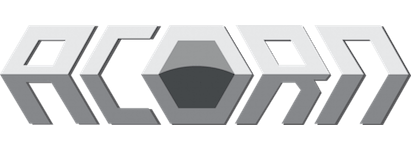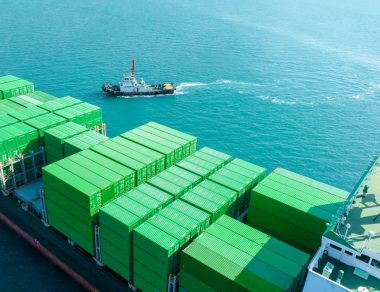
A sustainable supply chain is an increasing priority and responsibility for the modern manufacturer. How does an OEM enterprise weave responsible and sustainable practices into the fabric of their manufacturing and business strategies? Environmental, Social, and Governance (ESG) factors are no longer peripheral considerations but central to the operational and strategic decisions of businesses.
The recently updated Future of Supply Chains report by KPMG addresses how businesses in the manufacturing sector and wider commercial areas can integrate Environmental, Social, and Governance (ESG) into supply chain management strategies. It's an important subject for ourselves and our clients so we've summarised the findings and used it as a jumping off point for our own insights from the report.
Over a third of companies are planning to increase focus on sustainable sourcing. This needs to urgently increase, as over 45% of companies say they have no visibility in upstream supply chain (in a McKinsey Survey of Global Supply Chain Leaders): the inescapable conclusion is that good companies are exposing themselves to bad outcomes. Considerable risk and potential penalties encompassing everything from regulatory, legislative, to financial may result if they neglect this arena. To stay ahead of client, stakeholder, and employee expectations — as well as the legal and regulatory landscape — manufacturers need to plan ahead in a smart strategic way.
ESG progress and integration into operations cannot now be viewed as peripheral to production, but essential to business success.
Integrating Sustainable Supply Chain for ESG Compliance
Areas for building ESG capability and making progress to supply chain sustainability: — Responsible sourcing — Due diligence — Decarbonisation — Circular economy — Human rights in manufacturing — Tech-enabled ESG reporting
The Future of Supply Chains report thoughtfully presents six of the most salient areas where companies, especially manufacturers, can make significant strides …
Responsible Sourcing
The business landscape is changing and to future-proof operations manufacturers need to embrace a sourcing approach that is not only efficient but also ethically sound (it highlights the UN Guiding Principles Reporting Framework offering a pragmatic framework for this area: your company can look at the framework and use it to audit from the ungpreporting.org website).
Responsible sourcing for manufacturers means creating supply chains that are not just cost-effective but also socially conscious, ensuring that components and material sourced adheres to a company's commitment to ethical practices. It is a challenge that can't be lost sight of even within a turbulent supply chain environment of inflationary pressures and supply shortages. Working with logistics and supply partners who share the same values and commitments is paramount to successful implementation and building this capacity.
An action plan for responsible sourcing within the supply chain:
— develop a clear policy and framework for implementation, and embed with strategic planning.
— have an ESG-related supplier (and sub-supplier) code of conduct.
— identify material risks and impact, and prioritise for effective change.
— create remediation frameworks to remedy and prevent future issues.
Due Diligence
With a focus on the evolving world of regulations, such as the EU Corporate Sustainability Reporting Directive (CSDR, download here), manufacturers most be alert to the rising importance of compliance and being proactive in managing this area. This includes not just meeting the current standards but also anticipating future requirements and ensuring their supply chains are robust and adaptable. From 2024 mandatory sustainability reporting for almost 50,000 companies operating in the EU will be introduced. SMEs have the option to opt out until 2029.
Whether as a big, or not so big, manufacturer the CSDR lays out a challenging timeline for OEM sustainability reporting. This extra level of ESG compliance will need strategic work on assessing the impact of reporting, which ESG topics are material in line with new European Sustainability Reporting Standards, design of reporting data, KPIs and governance processes, along with full ESG metrics.
ESG reporting is becoming a mainstream issue for all manufacturers and suppliers. An action plan for CSRD includes:
— setting ESG targets, determining key metrics to meet current and upcoming regulations.
— understanding the competitive advantage and challenges for your business due to the implications of evolving ESG factors.
— collection, reporting and approval procedures for ESG data.
— investment in ESG data management, controls and processes.

Decarbonisation
The importance of reducing greenhouse gas (GHG) emissions is addressed in the report, and it underscores the need for manufacturers to lead the way in environmental stewardship. This involves not only meeting regulatory demands but also innovating in supply chain operations to minimise their carbon footprint, particularly in complex areas like Scope 3 emissions (see definitions below).
In terms of OEM sustainability in the future, organisations must keep ahead of the EU CSRD, and other country-specific and global legislation, along with potential governmental implementation of carbon taxes within the supply chain going forward (the CBAM, or Carbon Boarder Adjustment Mechanism is one of these initiatives mentioned in the proposed EU Green Deal).
Scope 1 emissions: direct greenhouse gas emissions from sources that are owned or controlled by a company, such as emissions from boilers, furnaces, vehicles. They represent the immediate environmental impact of a company's activities. Scope 2 emissions: indirect greenhouse gas emissions from the generation of purchased electricity, steam, heating, and cooling consumed by the reporting company. These emissions reflect the company's energy choices and efficiency. Scope 3 emissions: often the most significant share, these are all indirect emissions (not included in Scope 2) that occur in the value chain of the reporting company. They encompass emissions related to activities such as procurement, transport and distribution, waste, and water usage, highlighting the broader environmental footprint of a company's operations.
Any decarbonisation action plan should address:
— planning with internal operations and company suppliers to support effective transitions to lower GHG and emissions footprints.
— leveraging transport technologies and distribution logistics to minimise unnecessary carbon emissions.
— energy efficient transport and delivery management, and bundling services for effective carbon impact reductions.
— ESG performance audits with suppliers, up to direct investment with critical suppliers.
Circular Economy
The benefits of embracing a circular supply chain approach? Added resilience and reduced risk along with the positive environmental and ethical outcomes.
As part of an OEM sustainability strategy for manufacturers, this means rethinking how resources are used and reused, creating systems that not only reduce waste but also add value, thereby enhancing resilience against supply disruptions and price fluctuations.
The use of critical raw material, sustainable packaging, and efficient componentry and product life extension are salient elements to consider. The EU has identified 30-50 critical raw materials that could potentially severely disrupt supply chains and impact costs. The sustainable packaging market is booming and forecast to reach $452 Billion by 2028. The book Waste to Wealth (as part of Accenture Strategy research) highlights $4.5 trillion could be lost in economic growth by 2030 in the US alone if material value opportunities are not pursued.
Transitioning to sustainable packaging within a supply chain is an easy win and seen as low-hanging fruit to improve emissions and wastage (at Acorn we work actively with our clients to implement this). It is worth looking at the materials included in your OEM products, assessing and minimising use of particular materials for more substitution or more robust supply opportunities. Collaborating with a trusted supply chain partner on product design and assembly to assess cost efficiencies, component use and substitutions, and wastage can add competitive advantages to OEM manufacturing and align with ESG goals. (check our product design and assembly service).
Actions toward a circular economy:
— refactor manufacturing and supply chain processes to design out waste.
— partner with organisations providing services to eliminated waste and extend manufacturing efficiency (and product life cycle).
— data-driven approaches to optimise supply chain flows and reverse (aftermarket) logistics.
— employ circular transition indicators (CTI) as a pathway to circularity for your organisation.
— build a whole supply chain view of sustainable packaging use and re-use.
Human Rights in Manufacturing and Production
This part of the report calls for high standards of human rights and labour practices throughout the supply chain. This is a crucial point for manufacturers, as it emphasises the need to ensure that every part of their production process respects and upholds human dignity and rights.
But this is a journey. No company can change the world by itself. And multiple factors and parties need to progress together to change the overall environment — only 11% of companies follow through by working with suppliers on key human rights risks (Corporate Human Rights Benchmarking Report, World Benchmarking Alliance ).
Poor transparency and regulations in many raw material source countries, including vulnerable workforces, and lack of regulatory compliance, are out of direct influence. But in areas of low cost manufacture of finished goods and components, choice and audit of suppliers can make a definite difference.
Technology elements such as blockchain for provenance may soon help with the transparency and sourcing conundrum for companies wanting to make ESG progress. And the World Benchmarking Alliance has said ESG goals for human rights performance is driving change as more companies become accountable for their own responsibilities and are actively managing and working to improve.
Actions to improve in this area:
— clear policies and processes to mitigate human rights risks.
— strategies toward greater traceability and better provenance (audits and technology).
— procurement and supply strategies to prefer better actors and geographies where labour rights and compliancy is more robust.
Technology-Enabled ESG Reporting
Technology to drive transparency in company sustainability strategies is highlighted as a key driver. For manufacturers, this means updating current systems and leveraging the latest digital tools and analytics to enhance transparency, improve efficiency, and make their operations more sustainable as the means to do this within their operations comes on-stream.
Sustainability is inevitably becoming interwoven into every aspect of supply chain operations and governance, risk and compliance (GRC) systems are necessary to manage, monitor and make progress. A good GRC framework reduces compliance and regulatory risk. Manufacturers who pioneer in sustainable practices can steal a march on competitors and be ahead of the market with the advantages that offers.
Supply chain and procurement are likely to be the main area where ESG data and reporting matters. As such it is paramount that OEMs work with supply chain partners that can integrate and help bolster such an approach with their own services and systems. ESG reporting cannot be carried out alone, upstream and downstream suppliers and operations need to be involved. Hence why over 2/3s of global business leaders emphasise the need to increase visibility into their supply chains in order to maintain operational stability, resilience and end-to-end visibility and transparency going forward (KPMG).
Sustainable supply chain as opportunity
In reviewing The Future of Supply Chains report, especially through the lens of OEM manufacturing sustainability, the importance of visibility and traceability in supply chains comes to the fore. Improving organisational ESG can be looked at not as some huge regulatory headache with additional legislative overhead, but as a way to do better business. Indeed, ESG progress and integration into an OEM's manufacturing operations and supply chains must not now be viewed as peripheral to production, but essential to business success.
By pursuing better ESG and sustainable business practices through embracing new technologies and strategic approaches, significant competitive advantages can be had. More efficient production and manufacturing means less waste of material resources and financially.
Aligning supply chain operations with the broader goals of sustainability and social responsibility is a win-win. But it is a team effort, and the right partners and suppliers are essential for success. Engaging with these challenges and the evolving ESG landscape positively and proactively paves the way for a more sustainable and ethically conscious future for manufacturing, and future-proofs your own operations.
Learn about our sustainability and ethics
Acorn work with OEMs to provide more sustainable and ethical supply chains as part of an array of value-added services which upgrade your procurement and supply chain needs.
From providing leaner inventory and less waste, to sustainable packaging and more efficient delivery we can help you deliver on your ESG goals and provide a more sustainable supply chain.











